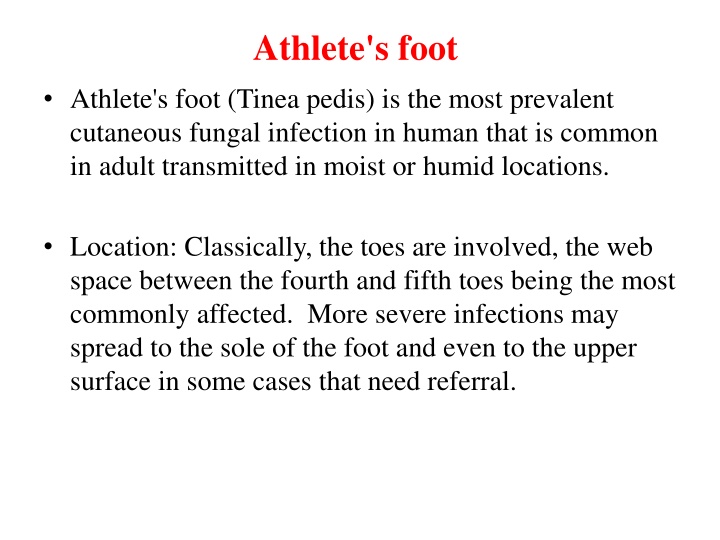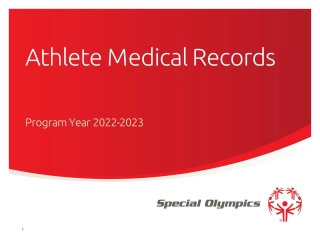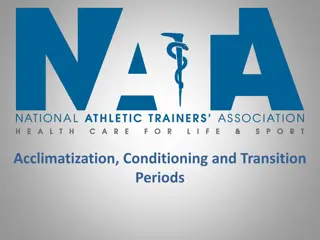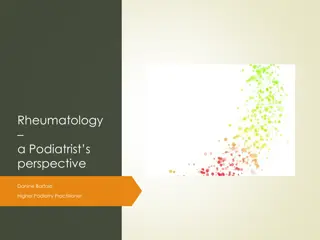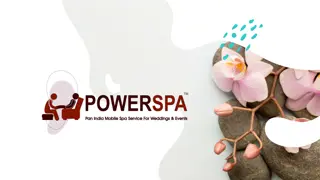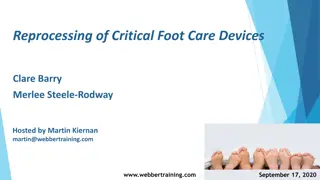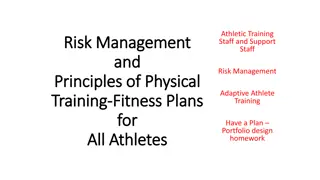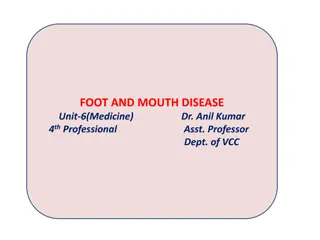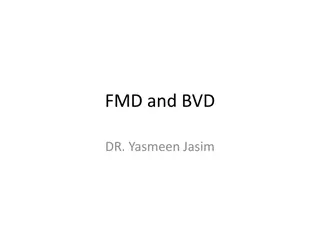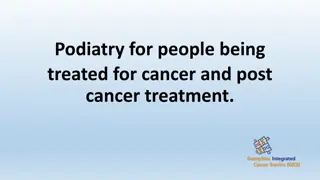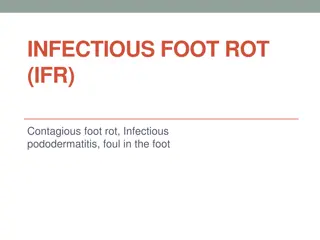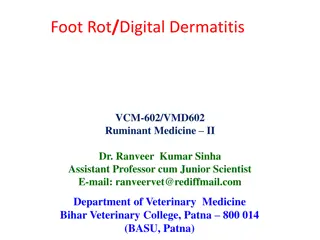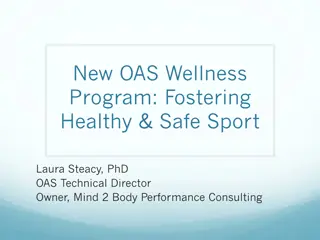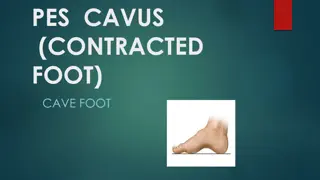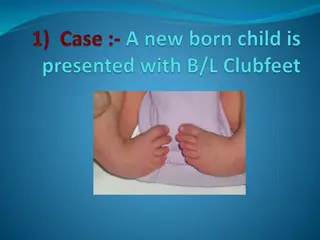Athlete's Foot: Symptoms, Prevention, and Management
Athlete's foot, a common fungal infection, primarily affects the toes and can spread to the sole of the foot. Symptoms include white, itchy skin with a sogginess and odor. Severe cases with broken skin and signs of bacterial infection require referral. Prevention involves practicing good hygiene, changing socks regularly, wearing breathable shoes, and using antifungal foot powder. Treatment with topical antifungals like azoles is recommended for a couple of weeks. Referral may be needed for immunocompromised patients, diabetics, and toenail involvement.
Download Presentation

Please find below an Image/Link to download the presentation.
The content on the website is provided AS IS for your information and personal use only. It may not be sold, licensed, or shared on other websites without obtaining consent from the author.If you encounter any issues during the download, it is possible that the publisher has removed the file from their server.
You are allowed to download the files provided on this website for personal or commercial use, subject to the condition that they are used lawfully. All files are the property of their respective owners.
The content on the website is provided AS IS for your information and personal use only. It may not be sold, licensed, or shared on other websites without obtaining consent from the author.
E N D
Presentation Transcript
Athlete's foot Athlete's foot (Tinea pedis) is the most prevalent cutaneous fungal infection in human that is common in adult transmitted in moist or humid locations. Location: Classically, the toes are involved, the web space between the fourth and fifth toes being the most commonly affected. More severe infections may spread to the sole of the foot and even to the upper surface in some cases that need referral.
Fungal infection according to site Feet ---------Tinea pedis Groin ---------Tinea cruris Body ----------Tinea corporis Nails --------Tinea unguium (onychomycosis Scalp ------Tinea capitis
Appearance: The skin in the web spaces appears white and (soggy). The area is normally itchy and the feet tend to smell. The skin become macerated and begin to peel off and the underneath skin usually reddened and may be sore. Severity: Severe athlete's foot [broken and macerated skin with signs of bacterial involvement (weeping, pus or yellow crusts) required referral
Conditions to eliminate Immunocompromised patients present with athlete's foot are best referred Diabetics may have impaired circulation or innervation of the feet and are more prone to secondary infections in addition to poorer healing of open wounds Involvement of toenails (see Tinea unguium)-- -referral.
practical advice to prevent reinfection 1-Clean the skin daily with soap and water. Dry the skin thoroughly after bath. Don t share personal towel. 2-Socks should frequently change and washed regularly. Cotton sock can facilitate the evaporation of moisture, whereas nylon socks not. 3-Avoid wearing occlusive, non-breathable shoes in summer, open toe sandals can be helpful and shoes should be left off where possible. 4-Applying antifungal foot powder daily can protect against athletets infection
Management Topical Antifungals generally advise use for 1 2 weeks after the disappearance of all signs of infection 1-Azoles (e.g. clotrimazole, ketoconazole and miconazole) Topical azoles can be used to treat many topical fungal infections, including athlete s foot. They have a wide spectrum of action and have been shown to have both antifungal and antibacterial activity. So its useful for secondary infection. SE: cause mild irritation of the skin
Tolnaftate Available in powder, cream, aerosol and solution formulations and is effective against athlete s foot. It has antifungal, but not antibacterial, action. It should be applied twice daily and treatment should be continued for up to 6 weeks. SE: Tolnaftate may sting slightly when applied to infected skin.
Terbinafine cream, solution, spray and gel formulations. There is evidence that terbinafine is better than the azoles in preventing recurrence, so it will be useful for frequent athlete s foot. Terbinafine can cause redness, itching and stinging of the skin; contact with the eyes should be avoided. Terbinafine products are not recommended for use in children.
Antifungal/steroid combination: 1- Miconazole 2% with hydrocortisone 1% (Daktacort) 2- Clotrimazole 1% with Hydrocortisone 1% (Canesten- H) Maximum period of treatment is 7 days. After that continue with topical antifungal Note: Topical steroid alone not recommended. Why?
